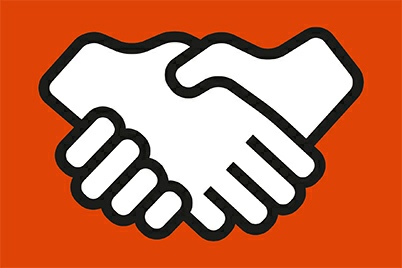

07584-


TEAM BUILDING
Collaboration -
A good designer / client relationship is key to a successful collaboration which in turn makes for an enjoyable working experience. Business relationships don’t happen overnight, and they require effort and understanding to build a good partnership. So, what makes a good designer / client relationship?
Here are 5 ways which will help to make a business relationship work effectively.
1. Good Communication
Communication and transparency between designer and client leads to trust, flexibility and creativity. During the initial briefing process, it is important to ask questions. Neither party should feel uncomfortable about this, as any question, no matter how insignificant, can help reveal critical information which may influence the success of the project. The designer needs to fully understand the client’s business and goals to inspire the creative process. In turn, the client needs to give feedback at all stages of the project to ensure that the final design meets the criteria of the brief.
2. Defined Timeline and Budgets
Setting a timeline not only organises the designer, it gives the client an idea of when the project will be completed. Managing expectations on timescales is crucial, and it is imperative that the agreed dates are adhered to and also if there are any deviations from this, they are communicated by both parties. It is vital that any information or feedback that is required by the designer is supplied by the client as soon as possible so that the project can be kept on track. It is also important to talk openly about budgets. Although an uncomfortable subject, it means that the creative solutions to the brief are realistic in line with the resources that are available.
3. Collaboration
Collaboration between the designer and client is important. It gives an opportunity to share thoughts and ideas and also to take risks. Even initial discussions, for example choosing colours or typefaces, may offer two differing opinions on what is the most correct and appropriate route to take. It is important to understand the reasons behind these opinions and to try and implement a solution that is acceptable to both parties.
4. Flexibility & Punctuality
Whilst an agreed timeline is a must, both the designer and client need to be flexible. Other factors that you may not necessarily be aware of might be taking place, such as cash flow issues, market changes or external influences. These decisions are much more than a timeline, so the need to be flexible by both parties, should always be taken into consideration. Where possible, designers should always make sure their deadlines are achievable and clients should make sure that urgent requests are fair and reasonable.
5. Productive & Constructive Feedback
Use feedback effectively. From the designers point of view, this means listening to what the client wants and balancing this against what you think is best for them. From a client’s perspective, you know your business better than anyone, but you should also be accepting to new ideas and solutions. Prompt feedback will save both the designer and client time and money. It avoids unnecessary work and means that more time is spent on the final piece of design.
6. Don’t Be Afraid To Say No
It is important from the outset to have the confidence to say ‘No’. This will avoid wasted time and effort and shows both parties to be professional and trustworthy. Experience and knowledge of your business will indicate if an idea is not feasible and being able to say ‘No’ should be respected by both the designer and client to help move the project forward.
Therefore, a designer / client relationship is based on trust and respect which is supported by constant communication. Every client and project is unique and every designer has their own way of working. Being aware of these facts will help achieve a good professional working partnership.
Please note that the views, thoughts, and opinions expressed in this article belong solely to the author, and not necessarily to any other group or individual. To ensure you are fully compliant with all current legislation, please take legal/professional advice and do not rely solely on the information provided in these articles.

Copyright © 2018-
Terms of Use | Privacy Policy, GDPR & Cookie Policy | Trading Terms





